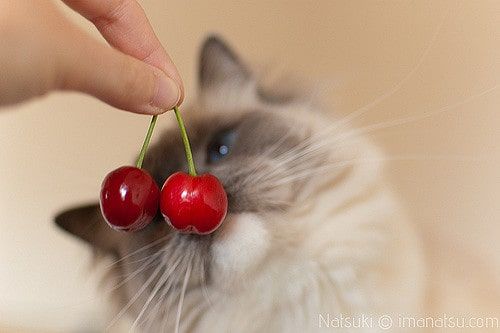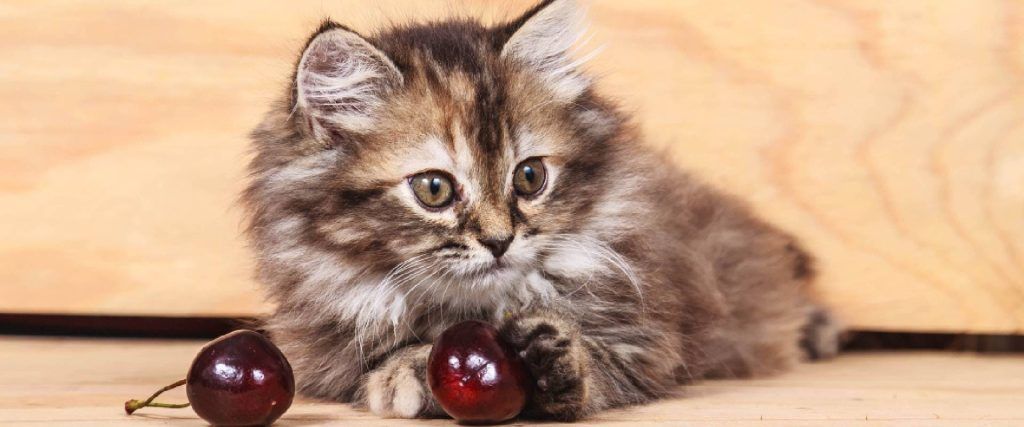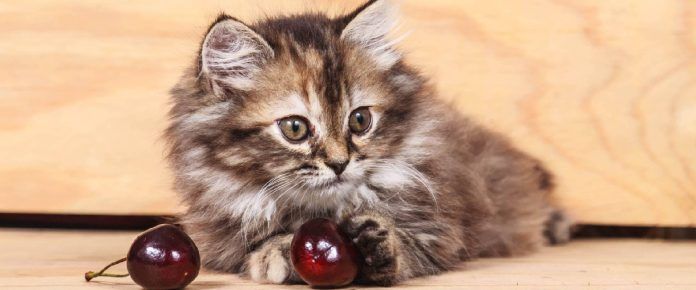Feline nutrition is puzzling terrain, especially when human food enters the picture. As cat owners offer fruits like cherries, questions arise. Can cats enjoy cherry treats or will pits pose threats? This article comprehensively explores the science and debate around cats and cherries.
While cherries hold appeal for their sweet tang, their risks outweigh benefits for cats. By understanding cherries’ role in feline diets, owners can prioritize their pet’s health.
Cats’ Dietary Needs
To determine if new foods fit into feline diets, reviewing cat nutrition basics is key. As obligate carnivores, cats require ample meat-sourced protein, fat, vitamins and minerals to thrive. Fruits offer no essential benefits cats cannot derive from meat.
With limited ability to digest plant sugars and fiber, cats obtain minimal nutrition from fruit. Occasional nibbles may be safe but cannot replace a meat-focused diet optimized for cats’ physiology.
Cherries: An Overview
Cherries encompass various flowering fruit-bearing trees and shrubs. Most commercially grown cherries belong to two species – the wild, bitter Prunus avium or the sweet cultivar Prunus avium L. Cherries offer antioxidants, vitamins C and A, fiber and potassium for humans. However, cats gain none of these benefits.
Cherries’ sugary taste appeals to us but suits feline needs poorly. Their composition and risks merit scrutiny before feeding cats.

Can Cats Eat Cherries?
Unfortunately, the consensus indicates cherries post more hazards than healthy advantages for cats. The pulp, juice and fleshy texture pose choking risks. High sugar content can cause gastrointestinal issues and obesity. Most critically, cherry pits contain cyanide-producing compounds lethal in small doses for cats.
Even a few cracked pits can cause toxicity. Allergic reactions are also possible from novel fruit proteins. Safer fruits exist if owners wish to offer treats. Ultimately, meat suits cats’ biology best.
Cherries vs. Other Fruits
Among various fruits, bananas, apples, blueberries and melons appear safest in tiny portions for cats. Their soft, pulpy flesh reduces choking risk. They also contain more feline-digestible nutrients than cherries.
Always monitor for reactions. Comparatively, cherries offer negligible benefits beside sweetness cats cannot even taste. The pits intensify risks beyond most fruits. Owners can find safer, healthier options to add diversity. Meat, not fruit, should form the foundation of cat diets.
Moderation is Key
If offering cherries, extreme moderation is critical. A single pit can seriously harm cats. Limit treats to a few licks of cherry flesh juice or a teaspoon of pulp once or twice yearly. Introduce gradually to identify tolerability.
Increase prudently only if no adverse effects. Ideal portion sizes depend on the cat’s weight but should comprise minimal calories. Mixing a sprinkling of cherry into food is safer than whole fruit. Any consumption should be infrequent and minimal. Meat-based cat foods should always be the mainstay of nutrition.
Precautions and Safety Measures
Cherries require diligent precautions. Keep plants, fresh cherries and food containing pits away from cats. Monitor outdoor areas for dropping fruits. Securely dispose of pits in locked containers. Recognize symptoms of toxicity like dilated pupils, difficulty breathing, drooling and vomiting. Time is critical.
Immediately contact the vet or animal poison control if ingestion is suspected. Depending on dose, intravenous fluids, oxygen therapy or activated charcoal may be used. Prevention is key as treatment is costly with uncertain prognosis once toxicity develops. An ounce of common sense keeps cats safe.
Cherry Products and Cats
Cherry-flavored products also warrant caution. Opt for cat treats with safer fruit extracts like tuna and blueberry. Rawhide chews with cherry dye may contain toxic preservatives. Some brands add xylitol sweetener which is highly toxic.
Unscented clumping litter is safer. Most importantly, avoid home baked goods containing cherry ingredients around cats. The allure of sugar and cherry aroma can attract curious cats before owners realize. Identifying cat-safe cherry alternatives removes temptation.
Common Myths About Cats and Cherries
False information causes dangerous misconceptions, including that:
- Cherries provide needed nutrients for cats. No fruits offer cats complete nutrition.
- Pits get harmlessly passed through digestion. Pits pose lethal risks to cats when chewed or swallowed.
- Dried cherries are safe. Drying condenses toxicity risks in cherry flesh and pits.
- Cats instinctively avoid pits. Curious cats cannot readily distinguish risks.
Responsible cat owners must counter unrealistic myths with facts to promote safety.

Cat Health and Cherries: Expert Opinions
Veterinarians consistently advise cat owners to avoid feeding cherries. Potential risks clearly outweigh negligible benefits for cats. Nutritionists warn cherries provide no proteins, vitamins or minerals cats need beyond traces. Any perceived fruit nutrition gets cancelled out by risks of toxins, choking and gastrointestinal upset.
Official guidelines recommend cats stick to high-protein commercial or homemade cat food optimized for their obligate carnivore needs. Owners wishing to supplement can consider safer fruit options once cleared by their vet. Overall, the consensus stands clear: cherries have no place in feline diets.
Cherry Alternatives for Cats
Many better snack options exist for cats. Single ingredient freeze-dried meats make nutritious high-value treats. Pet stores offer specially formulated cat fruit bars with digestible proteins, vitamins and safer fruits like mango. Carrot or apple baby food works for owners wanting vegetable or fruit.
Tiny licks of canned plain pumpkin or small pieces of banana provide fiber. Always introduce new foods slowly watching for reactions. Focus treats on quality protein sources suited for carnivorous cats. Take cues from commercial cat foods backed by nutritional research rather than unproven human foods.
Cooking with Cats in Mind
When preparing cherry-based foods and baked goods, exclude cats from kitchens. Ingredients like sugar and butter can also harm cats. Clean surfaces thoroughly after working with cherries. Never intentionally add cherry products into cat food recipes. Opt for feline-friendly fruits like cranberries and blueberries in cat treats.
Consult veterinarians to formulate balanced homemade cat foods. While cherries offer nostalgic appeal for humans, cat safety comes first at home.
Summary of Key Points
To recap, cherries provide no benefits for cats who lack sweet taste receptors and ability to derive nutrients from fruits. Considerable risks arise from toxicity, choking and poor digestibility. While tiny sampling may be well-tolerated in some cats, exercise extreme caution. Always supervise cats around cherry products.
Core nutrition should consist of quality cat food, not human foods. Owners can better nurture cats through optimal meat-focused diets and cat-safe treats. Overall, the safest approach is simply avoiding cherries altogether where cats are concerned.
Conclusion
Our affection for cherries motivates sharing their joy. Yet a cat’s wellbeing must remain the top priority, not tantalizing their curiosity. Science shows cats thrive on meat-based diets. Fruits like cherries offer only unnecessary risks, not health benefits. With ample safer snack options for cats, no reason compellingly exists to chance cherries.
By understanding our cats’ dietary needs, we can thoughtfully nourish the bonds between species. Sometimes care means stepping back from our assumptions as owners and seeing the world through cats’ specialized eyes.

